Unleashing our creative side – or 90 mins of nothing?
Cup of tea √
New box of Mini Chocolate Chip biscuits open on the desk √
Time to share some thoughts…
I have just reread my last post, from September last year (it has been a while) all about child agency and promoting girls making choices. Well we did that in spades last night at Guides and we, the leaders, survived.
During planning for the term the guides had identified doing art and craft so we programmed a “creative night – to unleash your creative side”. So as usual during this past week, the leaders conferred about what we might do, I came up with ideas, others tossed in ideas, and also the suggestion that we could just open up the 2 “craft cupboards” we have in the hall and see what the girls decide to do. So being the guide leader I am, and not quite able to let go completely, I bought some pony beads and printed off some pony bead creature pictures, had some other ideas up my sleeve and headed off to guides last night.
Instructions at the beginning of the night introduced the “creative” theme and gave the girls a few ideas and we then opened up the cupboards, with a final stipulation they could do anything as long as they cleaned up at the end. And away they went. There was painted fairy wands, tiaras, stamp cards, decorated picture frames, painted lizard templates that someone had found in the cupboard, decorated flowerpots, pony bead creatures, cutting, sticking, cellophane campsites being built and at one point a sword fight with straws. I’m still not exactly sure about the barnyard of animals that were made out of polystyrene cups but Gemma was definitely sure she knew what she was doing. Whenever a girl asked if she could use something she had found in the cupboard we said ‘yes’ without hesitation. For nearly 90 minutes our girls just created anything and for some possibly nothing.
At the end of the night, when asked what they had learnt, “that anyone can be creative” was the answer. Sitting on the side during the night, watching the girls interact, I saw some go in and out of conversations with others, others just sat in one spot and chatted with friends for the night and the leaders were able to spend some one on one time with different girls as they moved among groups. The girls may not have learnt a new skill or completed a range of set activities, but maybe we had given them space just to be, explore, share, interact and that was enough for the night.
Much of this year, as we have worked on the Building our Future projects at a National level, looking at the space we occupy in youth activities market, what the girls get from guiding, looking at the fundamentals of our program, I engage more and more with the idea of rather than providing ‘activities’ as such, we are not so much providing but helping the girls to build a space where they can explore who they are, and what they want in life. It is their space, we are there as leaders to facilitate the building of the space, to facilitate the activities the girls want in that space. It is different to my time in Guides, many years ago, and while the activities we do may well be similar, it is the idea of generating space for girls to explore in, rather than learning particular skills and activities that I’m interesting in exploring more. And possibly the basis for some further musing another day.
Cup of tea done, and if you think I’m going to admit to how many of the chocolate chip minis are left well….. 🙂
Better outcomes by letting go
It has been a while since I’ve written, not because Guiding has slowed down, maybe it has even got a little more chaotic.
In July I was part of a the team that ran Leading Edge 16. An amazing week in Alice Springs meeting 18 young women from around the country and New Zealand, getting to know a bit more about ourselves, having fun, learning project planning and getting up long before dawn to see the sun rise over the town on ANZAC hill. All part of the adventure.
This past weekend we had the Australian Program Committee meeting, a chance for all the State Program managers to get together and discuss a range of topics. This weekend we got to explore some new ideas – child agency and how that fits with girl-led guiding, and evaluation.
We talk of girl-led guiding and besides the girls having a say in their program and running some of the nights, I wonder what it could really look like and how we can explain to leaders and girls what it is. To start this discussion we had Jennifer Fleming, GGV CEO, come and chat through the concept of child agency.
When a child has a sense of agency, they are able to make choices and decisions to influence events, and to have an impact on their world. Having a sense of
agency is closely linked to the key concepts of being, belonging, and becoming, and to developing a strong sense of identity.
Isn’t this what we are all about? Guides done well is all about child agency.
So what does this look like in reality, in the units? I’m still exploring this and getting my head around it, but when I run our 6-7 year old unit and we stop doing an activity to have afternoon tea, I’m taking their choice off them (lower end child agency) – maybe I should be putting out afternoon tea for them to choose when they want to have it, without having to interrupt an activity. When we are making cards to send to another unit and I tell them they have to put a picture of themselves on the inside on the left side and write what they like about guiding on the right side, I am reducing their sense of being able to make their own decisions (low agency).
I need to let go a little, discuss with them what we are trying to achieve and see how they would like to achieve it. For our 7-12 unit when using the ANZAC day resource, instead of the leaders deciding we are going to make poppies, we need to have a discussion e.g “Next week is ANZAC day. What are the different things we could do to mark the day? What materials would we need. How many different activities do you think we can reasonably handle in one meeting? Who would like to plan an activity that we have talked about?”
I need to let go a little, to stop thinking about the output of the night (the card or the poppies) and think about what girls are getting along the way, when they have the choice and the time to explore things on their own, to be creative, to have time to chat and negotiate with others, to be with each other. Thinking of the WAGGGS skills for the 21st century, this time and space could be helping to develop these girls’ creativity, communication and character. Are these the outcomes we want, more so than the card or the poppy? I think so. Our Guiding isn’t always about the output (the amount of something produced by a person, machine, or industry) but the outcome (something that happens as a result of an activity or process).
Yesterday I had lunch with a dear guiding friend with whom I have great discussions, and a chance to keep talking through these ideas and what it may look like in our units. Time to have another look at our Term 4 program, to rethink what outcomes we want for our girls and how we might give them promote their opportunities for choice and decision making. I know I’m not going to get it right all the time but it is time to let go a little of the control.
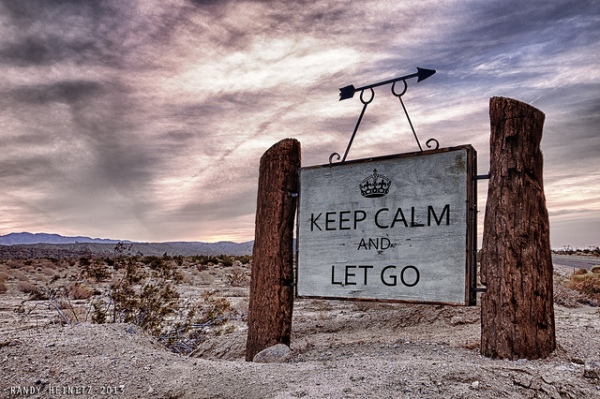
More or Less – who needs Guiding?
I was at the GGV Annual Meeting on the weekend and after the meeting there was an auction of items with all funds raised being put in the Blackburn Bursary. The Blackburn Bursary is a fund run by GGV to assist families in need with the GGV membership fees. A very worthy fund and one I hope continues to be able to provide that support whenever it is needed.
What made me balk a little was the statement I hear regularly, the Bursary supports those girls “who often need Guiding the most”. And this is where I have trouble. While I understand the statement I don’t necessarily agree with it. In my mind I know that if a family is struggling financially their girls won’t necessarily have the chance to do other after school activities, go on school camps and other similar things. For that reason, Guides is special and yes, they do need Guides and I’m so glad we can support that to happen.
Yet, my issue is that the statement implies that my girls in Canterbury, a well-off suburb of Melbourne, the majority of who attend private girl schools in high school, somehow need Guiding less. And while I am defending my girls, it also makes me wonder if what myself and my wonderful co-leaders do is less valuable than the leading done by others, in less affluent areas?
My girls go through the same peer pressure experiences that other girls do, they have self-doubt and confidence issues, they deal with their parents splitting up or coming from single parent families, in most cases their parents both work because they have made the decision to send their daughters to private schools and sometimes they can’t attend events such as Snoozefest because their parents are paying the mortgage and can’t afford extras. The older girls all have their own phones and are on them constantly, but with that they also deal with bullying, pressure to have the right look, the right clothes, the right accessories. They deal with first dates, pressure from boys, alcohol and drug issues just like all other teenagers.
So while it might be easier for us to provide a range of experiences for the girls because there isn’t always day to day money issues, we still need to ensure that we can give them a space where they feel safe to be themselves, to share what is happening in their lives, or to just escape the pressures of school, homework, expectations. The same thing that leaders across the country are aiming to do. So while the girls we see and care about each week aren’t necessarily the ones that “often need Guiding the most”, we hope that they are each gaining something from turning up each week that will stand them in good stead for many years to come, and the passion and commitment of the leadership team is making a difference. Does any girl really need Guiding “more or less” than any other?
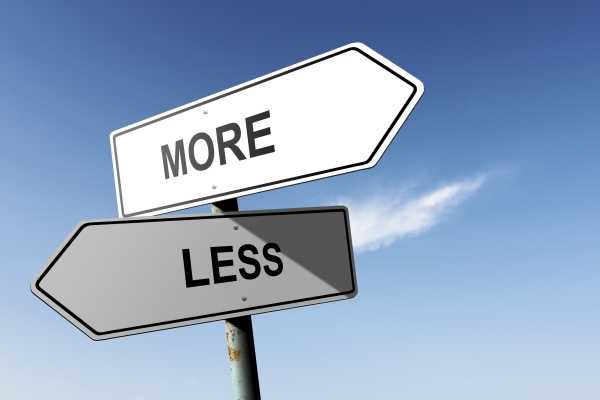
Getting the right badges in the right place
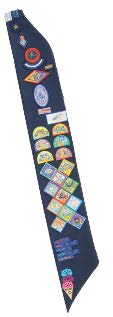
Last week I watched as all the photos of Guides and Leaders being part of ANZAC day celebrations around Australia were posted on State Facebook pages, the GGA’s Facebook site and the Program Ideas page. It was great to see so many girls involved at all levels of their community, remembering and commemorating this important day.
However, at the same time, I couldn’t help myself looking closely at the uniform, in particular the sashes worn by the girls. While the sash as such is uniform, it is part of the Program Department’s purview to decide where badges go on the sash. This overall badge placement is something I inherited as National Program Manager and so I have limited influence on where badges go, however my team decides on which badges are deemed official sash badges. What was of interest to me was the wide variety of placements for badges.
So we have the “official” sash placement picture on the GGA website. There are also posters available in some of the Guide Shops that can be put up in your hall or hut. The girls’ handbooks have a picture that shows where the badges go. However, I saw photos of girls with badges in the wrong places, in a range of order down the sash, badges that weren’t sash designated badges, out of date badges, badges hanging off the sides of the sash etc. And I wondered a few things:
- Is it important where the badges go on the sash?
- Does it matter which badges go on the sash?
- What effect, if any, will this have on our image or membership?
I’m not a huge fan of the sash for everyday unit meetings, but it is part of our uniform and when worn correctly it looks really smart, and for that reason I do think it is important where the badges go and which badges are on the sash. Will it directly effect membership – possibly not, however I guess I do believe that image is important and having sashes look ordered and uniform is part of that image.
So how do we make it easier for leaders, parents, girls to ensure that they have the right badges in the right place on their sash? I’m open to suggestions.
I also found it difficult to see girls in sashes that were the wrong size for them (knowing it isn’t always easy to get a sash the right size for smaller girls) or who were having trouble keeping the sash in place on their shoulder so that it didn’t slide off or around their bodies. I wonder if when girls are involved in parades or marches or other official events, it wouldn’t be a good idea to slip a safety pin through the sash and attach it under the girl’s collar to the polo shirt so it can’t slip? However, this is just another thing the leader needs to think about.
Our girls did look smart and well presented in all those wonderful ANZAC photos, so does it really matter? I think it does but am happy to be disagreed with.
An award by any other name.
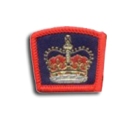 I have a range of weird and wonderful questions come my way most weeks but there is one that has been brewing and which will need an answer fairly soon, and I don’t have it. I am starting to get asked what will happen to the title of the Queen’s Guide Award when Queen Elizabeth II dies? Will it still be the Queen’s Guide Award or when Prince Charles becomes King, will it be the King’s Guide Award?
I have a range of weird and wonderful questions come my way most weeks but there is one that has been brewing and which will need an answer fairly soon, and I don’t have it. I am starting to get asked what will happen to the title of the Queen’s Guide Award when Queen Elizabeth II dies? Will it still be the Queen’s Guide Award or when Prince Charles becomes King, will it be the King’s Guide Award?
I have two conflicting version of who the award is named for and neither seems definitive. The first is that the award is named after the Queen Mother in 1946. The following is currently on the GGA website as part of a FAQ page when the Promise was changed.
Is the Queen’s Guide Award still going to be named after the Queen now she has been removed from the Promise? The Queen’s Guide Award was not named after the present Queen. It was actually named by Queen Elizabeth, the Queen Mother in 1946. There will be no change to the name of this Award. The Award will not change its name when we have a King as a monarch. It will remain the Queen’s Guide Award in recognition of its origin.
However, others have told me this isn’t true and it is now named after the current Queen and therefore should change when we get a new monarch.
The Queen’s Scout award is named after the reigning monarch according to Wikipedia
A Queen’s Scout is a scout who has attained the Queen’s Scout Award. The Queen’s Scout Award is the highest youth award achievable in the Scouting movement in the Commonwealth realms, including the United Kingdom, Canada, Australia, and New Zealand, where Scouts operate under the patronage of Queen Elizabeth II. Whether the award recipient is a Queen’s or King’s Scout depends on who is the current Monarch of the Commonwealth realms.
So a week ago I emailed both Girl Guiding UK and the New Zealand Girl Guides who also have the Queen’s Guide award. My UK counterpart has emailed back to say that whilst it was originally named after the Queen Mother, it has since been changed to be named for the current Queen and it is her crown that is on their badge. However, she did add that they hadn’t thought about whether they would have to change the name of their award. I’m still waiting to hear from New Zealand.
So now I have been looking at images of the Queen Mother’s crown and Queen Elizabeth II’s crown and our Queen’s Guide badge. As far as I can tell with my untrained eye, we seem to have Queen Elizabeth II’s crown on our badge and certificate. So that would suggest that whilst it may have originally been named after the Queen Mother, it is now named after the current Queen, so that may mean a change of name.
However, then I was having lunch with a guiding friend who threw another possibility into the mix. While it is said that on the Queen’s death, Camilla, Duchess of Cornwall, intends to be known as the Princess Consort and not by the title Queen Camilla, what would happen if Prince Charles abdicates for her son and we have King William and Queen Catherine. Would we keep the Queen’s Guide Award in honour of Queen Catherine, or follow the Scout’s way of naming it after the reigning monarch?
This is all too hard, and has me wishing that as the Queen celebrates her 90th birthday next week (21st April) that she lives a long and happy life for many years to come and then I will no longer be the National Program Manager, and this will not be my problem. Or maybe Australian can become a Republic and we can name our peak achievement award something else entirely. I’m happy to go with either option.
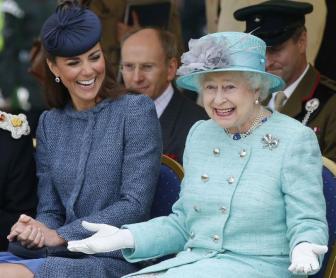
Countering misinformation
Last night, thinking about what I might write about next, thinking back over the past few weeks, 2 separate moments came to mind. The first at a day organised by GGV earlier in the month where among many other discussions I was in a group talking about how we can debunk the many myths of guiding. Then last Saturday, with my National Program team we were again talking about the misinformation that exists in Guideland and how we might ensure leaders had access to the right information. So I wonder, how is it possible for leaders, managers, volunteers to get the right information when so much information is passed on by word of mouth, and subject to everyone’s interpretation or beliefs about how it should be?
Reading the posts on the Facebook Girl Guide Program Ideas page is cause for both great interest (how fantastic it is to see the sharing of great ideas – many of which I have used myself) and great frustration (leaders, with the best of intention, sharing misinformation and at times berating others for being “wrong”). Take for example a recent post about Junior Leaders. Comments included:
- she needs to be a member of a peer unit to be a real Junior Leader
- she needs to be working on her Trefoil 3 Leadership to be a Junior Leader
- only girls 14+ are Junior Leaders, younger girls are Guide Helpers
- she can be a Junior Leader without being a member of a peer unit but can’t work on her Leadership qualification
- there is a booklet that tells her what to do – only available in NSW/ACT
So as you can see, a range of advice here, and some of it is right, some half right, and some totally wrong. All given with the belief that what has been written is correct. This was just one example, other discussions, again based on the belief of volunteers that what they know is right, can be quite heated, for example a discussion on what a unit name can consist of. It doesn’t seem to matter what is written in Guidelines, as there are National (Guidelines) and State specific guidelines that are different and then there is the history, tradition and beliefs of leaders on the ground.
So, again I come back to wondering how we can not only give our volunteers access to the right information, but how we counteract the misinformation that is out there? Misinformation born from good intentions, the knowledge that is how it is done in their district, or what they have been told, or what they think should be the case. For the most part, the discussion on the Program Ideas page usually gets around to the right information being shared, however I wonder how many readers see it as the right answer, or are willing to change their understanding because of it?
As we implement the recommendations from the Program review, the Project Team knows that no matter how much we share what is happening with our membership there will still be misinformation shared, possibly causing concern and anxiety. We don’t want this. We have a website and email for further information about the Building our Future project and hope volunteers will read these and other official communications to ensure they have the correct information.
And for the record: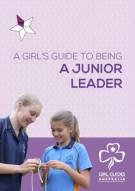
Junior Leaders don’t need to be part of a peer unit, unless they want to work on their Trefoil 3 Leadership as then they need a peer unit to help assess the badge. Junior Leaders should be registered within their State as a JL so that your State Program Manager can track and support them. There is a Junior Leader resource which is a National publication. And more information, plus links to registration forms and resources, is available on the Youth Leadership page on the GGA website
After the AGP Review, what’s happening?
 2016 marks the beginning of a new project to implement the Recommendations from the AGP Review: Building our Future. Over the past 2 years we have listened to our girls, leaders and parents, explored the latest research on girls and young women, talked with other WAGGGS member organisations around the world, and it is time to act on what we have learned.
2016 marks the beginning of a new project to implement the Recommendations from the AGP Review: Building our Future. Over the past 2 years we have listened to our girls, leaders and parents, explored the latest research on girls and young women, talked with other WAGGGS member organisations around the world, and it is time to act on what we have learned.
Why the name “Building Our Future”? We know that there is great Guiding happening around the country but changes are needed. We have respected traditions, history and values, and now it is time to Build on those great foundations so that Australian Guiding can evolve and create great Guiding for the Future. We want to offer Guiding to more girls, in more ways, respecting and building on the Guiding that happens now. We have the Building Blocks for a bright future.
Building our Future is a 3 year project. Why so long? Guiding has invested deeply in the AGP Review and we want to honour that and get any changes or developments right. We want to make sure that everyone understands what change is happening and why. Importantly, we want to ensure that we can support leaders and girls with the right resources and tools before any changes are implemented.
Our projects teams leading the change, National and State organisations who are supporting us and the leaders on the ground are all volunteers. The project timeframe respects their needs and takes this into account.
The recommendations
Six recommendations came out of the Review but we are not tackling all of them at once. We are starting with those that our girls and leaders said were the most important to them.
Project 1: The research said parents and leaders didn’t always have a clear understanding of what our Program offers the girls. So we are developing clear narratives to explain what the Australian Guide Program is, and what it can offer girls and young women. These narratives will be developed in a range of languages and aimed at targeting a range of communities emphasizing those aspects of our Program that are important to them. We are working with internal committees and external agencies in a pro bono capacity to ensure professional and appropriate results. These will be tested mid-year with final resources due at the end of 2016.
Project 2: The Girl Recognition System is one of our greatest assets but also an area of confusion and debate for our parents and leaders. Parents told us they weren’t always sure how to support their girls to achieve their challenges, while others said their daughters earned badges without understanding why. Leaders told us that some of the badges worked well, but there was also a need for shared standards, progression, and more resources to support their Guides. This project aims to develop a framework for the recognition system and the tools and resources to support girls, parents and leaders to use the recognition system more successfully. Better support for the Queen’s Guide Award, and JBP and BP, and more guidance for parents and leaders are also intended outcomes of this project. This is an 18 month project and further consultation will occur across the country as we develop the framework and resources.
Project 3: We want to be able to provide our Program to more girls. We want to look at new ways of delivering the program to make is accessible to girls for whom a weekly face to face delivery just doesn’t work. This project looks at what it will take to offer our Program differently where we see a need. There are a few flexible models happening around States currently, so we will look at these, and see what it takes to make greater flexibility possible. This project does not mean that program delivery will change for everyone, but that new models can be used where they are the best option. The project will include looking at membership models around the country, developing best practice and working with State organisations to make it happen. This is a long term proposition and builds on flexible models already in place.
Project 4: The research told us that leaders and parents had mixed feelings about our current Program Foundations (Elements and Fundamentals). For some they underpinned their term programs, but for others, they weren’t exactly sure how they were meant to be used. The current language of the Fundamentals and Elements doesn’t always explain clearly what our Program is delivering. We will look at these further, going deeper into the research, and work on the development of a range of possible foundations that can be used to underpin our Program for the future. This project will develop a number of alternatives and we will again consult with our community to be sure that parents understand what our Program offers, and Leaders and girls have a strong foundation on which to develop their individual programs. This is an 18 month project with ongoing communication and resource development to support its implementation.
Project 5: Developing more flexible leadership roles and Project 6: Development innovative programs and partnerships to offer guiding to more girls will begin later in 2016 and early 2017. More information on these projects will be published later in 2016
So how can you find out more, continue to contribute and stay up to date with what’s happening?
There will be regular updates in State Newsletters and other State communication channels and we will send updates via social media.
There is a Building our Future page on the GGA website and comments can be sent to program@girlguides.org.au
We value all constructive feedback and look forward to sharing the exciting developments as they happen.
Starting over, 30 years on
It has been a while since I’ve blogged. Here we are in March and so much has happened in my Guiding world already in 2016. Not sure what order to tackle them in as they range from local girls and units to National Projects. So let’s start local.
At a weak moment late last year, in the Canberra QANTAS lounge, when I was exhausted and pumped at the same time from our AGP Review day in Canberra, I agreed to something which has manifested itself in both an exciting and terrifying adventure. I was talking to Jennifer Fleming, the GGV CEO, and she was lamenting that there was nowhere local for her 6 year old twins to start guides. We got talking about the possibility of a school based after-school unit at her daughters’ school – it fitted with what we had just been talking about, the need to take guiding to where the need was. So I apparently said – “Sure, we can do that, I’ll be in it!”. And then promptly forgot about it until 2 weeks later, I get an email from Jen talking about going ahead with the idea I had agreed to. Sheepishly I had to reply, asking what idea I had agreed to…and I swear I hadn’t been drinking in the lounge. So….
After talking to the principal and getting his agreement, we spent an afternoon after school in November handing out bags of information, badges and biscuits to all the girls in the school and asking parents of younger girls (5-6 year olds) to express their interest in finding out more. We sent an email in late January and started a new after school based unit on the 1st Feb with 15 very excited 5 and 6 year olds and 1 slightly terrified leader. The school has given us a large inside space to meet, the girls come straight to us after the school bell goes, and we start guides at 3.45pm, running to 5pm. For the first few weeks I asked the parents to bring their girls into guides but now the girls get themselves to guides and parents don’t need to meet them after school, then come back later.
So why do I say terrifying? This is a new age group for me, and we are finding our way together – I’m learning what they can do, how long things take, what sort of instructions I need to give. They are learning about guides, how to work with new girls, not necessarily their friends. I plan the session and convince myself I can adapt and wing it if needed but it still feels like I am flying without a net. I have had great support from Mel from GGV but that will only be this term – she has lots of other units and leaders to support – and we have 1 mum signed up for training, with the hope of a 2nd becoming at least a unit helper.
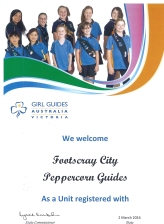
Looking at this with my National Program hat on, I think about what it must be like for a new leader, with no experience, to know just what to do for the first 6 months of a new unit – we have chosen a name for our unit, chosen patrol names, starting working on understanding our Promise, celebrated World Thinking Day and helped our community with Clean Up Australia.
However, as a new leader, how do you know what you are meant to achieve in that first 6 months? I have an idea due to 30 years experience, but I am still working to adapt what I know to a new unit and age group.
Should we be putting together a package for leaders of new units of various ages giving them the programs that help them do things like introduce the Promise and Law, introduce the Patrol System, how to work with the girls to develop a girl-led program and clear outcomes on what you should aim for in the first 6 months or a year with a new group of guides? This could be for a new 5-7 unit, a new 14-17 unit or anything in between. It could include information to be adapted for parents, what forms to complete etc. We could work with Learning and Development to incorporate aspects of the Leader’s Journal that needs to be completed so the leader is also ticking off things she needs to qualify. If I, or a couple of volunteer mums had a “new unit pack”, it would allow me to relax a little, feel more in control and make sure we were all heading in the right direction.
If you started your unit, what would have helped you in the first 6-12 months? If you are trying to get new adult volunteers involved, would a pack for the first 12 months of their guiding life be helpful? What should it include? The more I think about it, the more the idea grows, now to find the time to develop it…
Meanwhile at Footscray City Peppercorn Guides, we are continuing to muddle along together, with a lot of laughter and a steep learning curve.
Coming up: After the AGP Review – is anything happening???
Badges, badges everywhere but what are they really for?
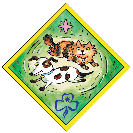 At the National Youth Forum held at the Great Bunya Gathering last month, we asked the girls present about what badges they did at Guides, how they did them, did they use peer review to assess them, and what role they saw badges playing in the Australian Guide Program. Reading their answers has been interesting.
At the National Youth Forum held at the Great Bunya Gathering last month, we asked the girls present about what badges they did at Guides, how they did them, did they use peer review to assess them, and what role they saw badges playing in the Australian Guide Program. Reading their answers has been interesting.
The National Program team are often approached with suggestions for new badges, or requests to approve badges written by others. Each time we consider a new badge, we ask ourselves whether the content can be incorporated into one of the badges we already have, is it really necessary, what does it add to the Program or is this just another resource that Leaders are going to feel they have to take on, when they are already feeling overwhelmed by the amount of resources/badges already available? These aren’t easy questions to answer, and requests we don’t take lightly. And there is always the cost of badge production to consider, with retail operations doing their best to estimate numbers required, yet not wanting to overstock and have “dead” stock on their hands, another cost.
So why do the girls do badges? What are we trying to achieve with the badges?
So far, the responses from the girls that I have read talk about them being reward or a sign of achievement, they feel they represent or provide a memory prompt to remind them of what challenges they undertook to achieve the badge. There has been a mix of responses as to which of the Explore, Create, Achieve and Discover badges they had completed with girls believing that the JBP, BP and QG badges being the most important as they “make you extend yourself in a number of areas not just things you are interested in”.
There were various responses about the use of Peer Review to help girls set challenges and assess whether they have achieved or completed the challenges, which supports the comments made in the AGP review consultation. Some units manage the Peer Review process very well, others don’t use it at all. So again, what is the Peer Review process trying to achieve?
We have a Recognition System which specifically encourages various forms of celebration of achievement, with badges being only one possible way, yet still, we seem so wedded to the need for a badge to give the girls when they complete any particular activity – something we have recently experienced from the National Leadership to the Unit Leaders. Are we doing as much harm as good when we set up girls to expect a physical reward for doing something in Guiding?
I don’t have the answers but I think we should do some more investigation into understanding what role badges play in our Program. What do you think?
Validation workshop for AGP Review
I feel like I am just beginning to recover from the excitement and pressure of last weekend in Canberra. 3 pretty intense days of meetings, a workshop and a trip to Parliament House, and of course, also lots of laughter, networking and fun. For me the main event was the AGP Review Validation workshop on Sunday. A room filled with the GGA Board members, the State Commissioners and the State Program Managers all bringing their expertise and unique perspectives to the draft recommendations of the Review. It was amazing.
We started the day checking in with everyone in the room, how they were feeling about the day. There was lots of positivity, a few bringing the stress of their jobs, some unsure of what was expected of during the day. All these were OK.
The AGP Review Project Team shared what had been done over the past 2 years, from the decision that it was time to review the Program to now, we discussed the scoping of the Review, the research that was done and the extensive consultation results from across the nation. We then discussed the recommendations in detail, looking at risks, resources and required outcomes. The collective capital in the room was fantastic. When I thought we had exhausted all the possible risks and outcomes for the recommendation I was facilitating, the next group to discuss it brought new ideas and new perspectives. This whole process has been a chance to showcase the wonderful Guiding experiences that Guides are getting around the country, to highlight the innovative programs being offered and the variety of ways we can share the great game of Guiding with as many girls as possible. 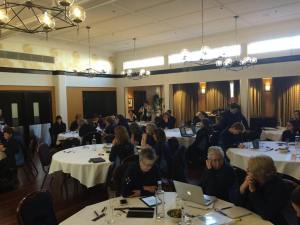
So what happens now? The Project Team will continue to work on the finalizing of the recommendations, the communication pieces and work with the National Program Committee to develop a robust implementation plan for final approval by the State Commissioners and GGA Board. We are conscious that it has taken what seems like a long time to get to here, but we are determined to get the implementation plan right, resourced properly and over a time frame that fits with all the other wonderful guiding that is going on around the country. Stay tuned, information is coming and we hope that everyone is excited about the initiatives we are exploring.
This past weekend brought us another step along the road of ensuring that Australian Guiding continues to provide a rich tapestry of experience, empowering girls and young women to achieve their goals now and in the future.
There are lots of different ideas and myths about all sorts of things, so if anyone has questions or comments about the Australian Guide Program that they would like to share with me, please email me on program@girlguides.org.au.
